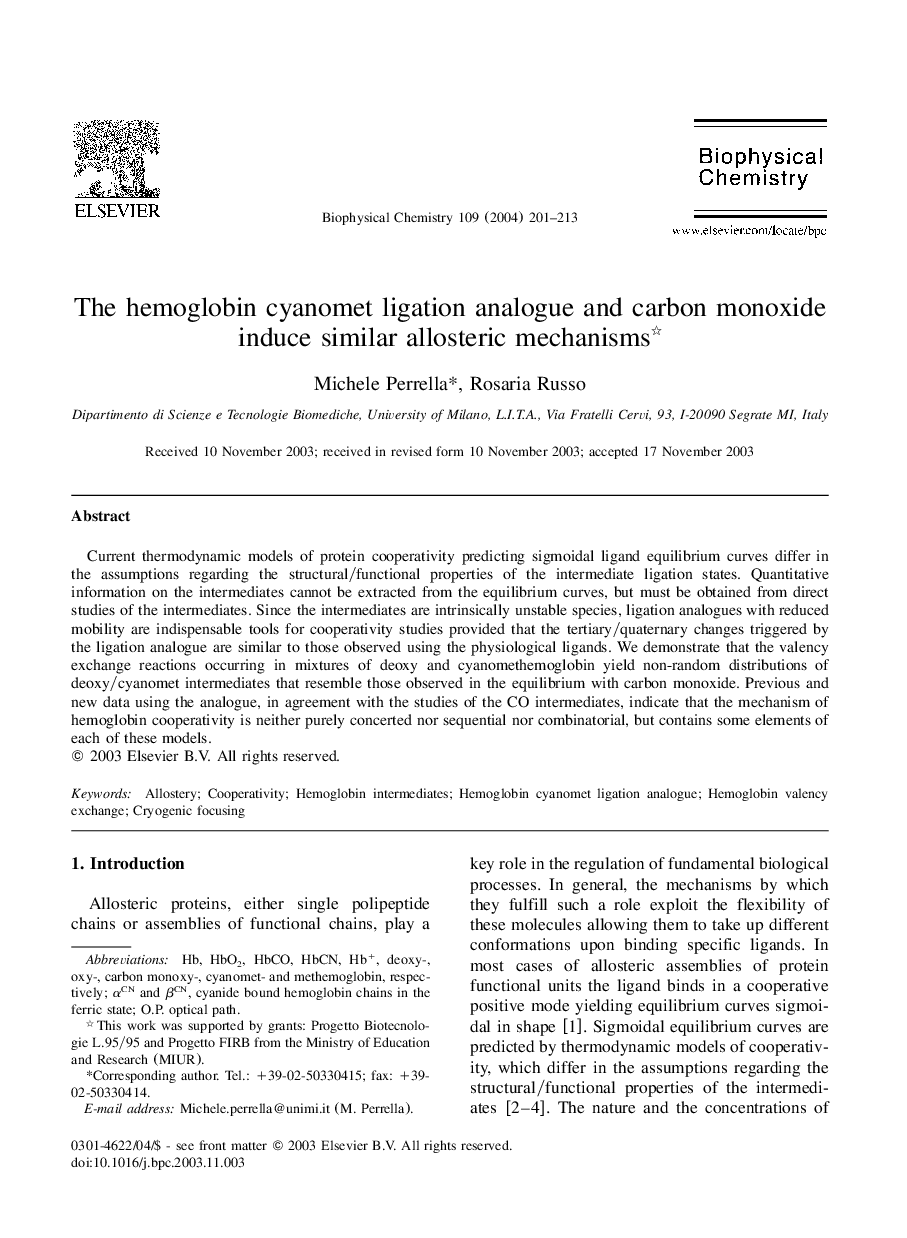| Article ID | Journal | Published Year | Pages | File Type |
|---|---|---|---|---|
| 9573771 | Biophysical Chemistry | 2017 | 13 Pages |
Abstract
Current thermodynamic models of protein cooperativity predicting sigmoidal ligand equilibrium curves differ in the assumptions regarding the structural/functional properties of the intermediate ligation states. Quantitative information on the intermediates cannot be extracted from the equilibrium curves, but must be obtained from direct studies of the intermediates. Since the intermediates are intrinsically unstable species, ligation analogues with reduced mobility are indispensable tools for cooperativity studies provided that the tertiary/quaternary changes triggered by the ligation analogue are similar to those observed using the physiological ligands. We demonstrate that the valency exchange reactions occurring in mixtures of deoxy and cyanomethemoglobin yield non-random distributions of deoxy/cyanomet intermediates that resemble those observed in the equilibrium with carbon monoxide. Previous and new data using the analogue, in agreement with the studies of the CO intermediates, indicate that the mechanism of hemoglobin cooperativity is neither purely concerted nor sequential nor combinatorial, but contains some elements of each of these models.
Keywords
Related Topics
Physical Sciences and Engineering
Chemistry
Physical and Theoretical Chemistry
Authors
Michele Perrella, Rosaria Russo,
